Photo-Wednesday: what is the full frame and how is it compared to APS-C?
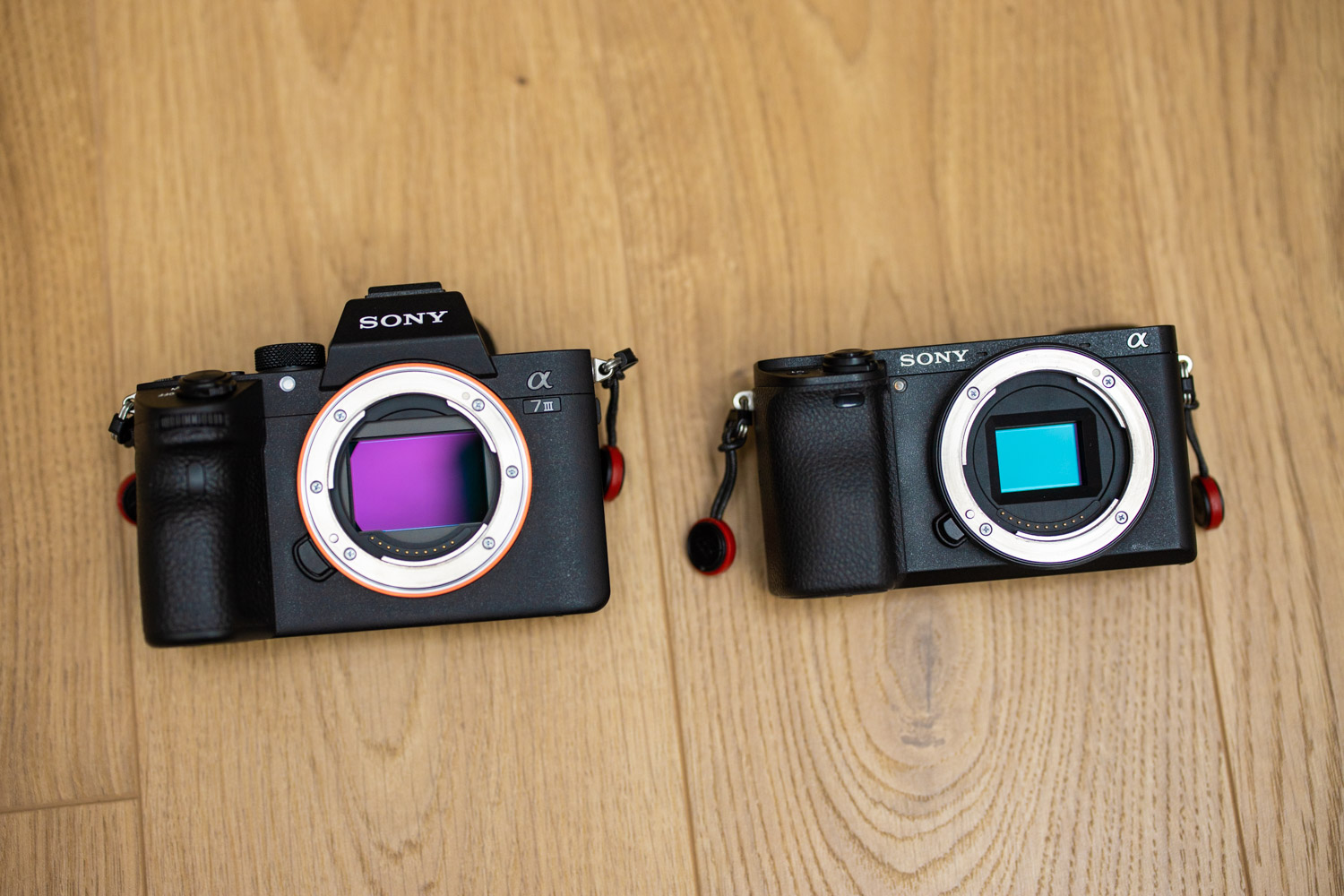
The year 2018 abounded in the premieres of full frame cameras, and the "full frame" was changed by all cases. What exactly is it and why does it attract such interest?
Photo-Wednesday is a cycle in which we show photographic curiosities, we suggest how to choose equipment and take better pictures, as well as reveal the techniques of processing and editing programs.
With the development of the photographic market, the concept of "full frame" returns like a boomerang. Until recently, full frame cameras were very expensive and reserved only for professionals, but for some time the full frame becomes available to every photo enthusiast. A modern camera with such a matrix could recently be purchased for PLN 3,500. With no cashbacks and promotions on Black Friday, basic cameras of this type can be found in the price below 5000 PLN.
Only what is the full frame actually? Recall a few techies and check how the comparison with the smaller APS-C matrix is.
"Full frame" is the size of the camera matrix. This is exactly 36 x 24 mm.

The term "full frame" is a reference to analogue times, when the standard size of the photographic film was a 36 x 24 mm picture. This size was called the 35mm format.
For many years after switching to digital technology, the sensor was much smaller, because creating a digital equivalent of 36 x 24 mm film was too expensive. Over time, the digital technology has caught up with analogue, and we can enjoy a matrix of size that has been standard in photography for many decades. This is the full frame, the digital equivalent of a 35mm format.
It is worth noting that the full frame sensor is over twice as large as the popular APS-C format.
The smaller format of the APS-C matrix is very popular, as it exists in the vast majority of SLR cameras on the market, as well as in many mirrorless cameras. It has dimensions of 24 x 16 mm. If you are thinking about buying a reflex camera for up to 5,000. PLN, it will almost certainly have an APS-C matrix.
Of course, there are more formats on the market than the aforementioned full frame and APS-C. Their list can be seen below.
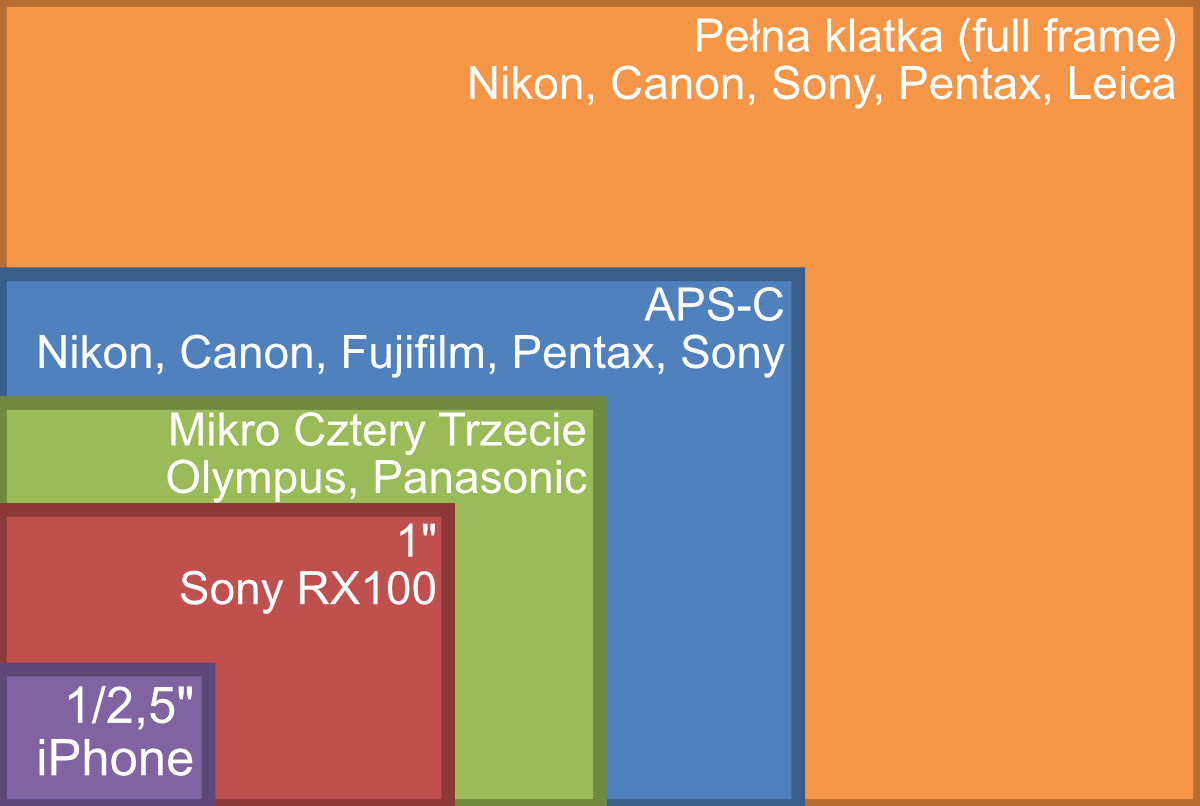
This combination shows that smart matrices are incomparably smaller than matrices used in traditional cameras. Each subsequent size gives a noticeable jump in the quality of the photos.
What is the result of these differences? In what is the full frame better and worse than the smaller dies?
It can be assumed that the larger the matrix, the better the image quality can be obtained. The pixels on the larger matrix are definitely bigger in size, so there is much more light on one pixel. Thanks to this, we have a better signal-to-noise ratio. The larger matrix gives smaller grain at higher ISO sensitivities, i.e. at night.
In addition, the larger matrix also gives a better tonal range and allows for a much wider range of photo editing, especially when photographing in RAW. These are the most important features of full frame sensors.
So much theory. Let's see how these differences look in practice. Here is a combination of photos from the full frame and the APS-C matrix.
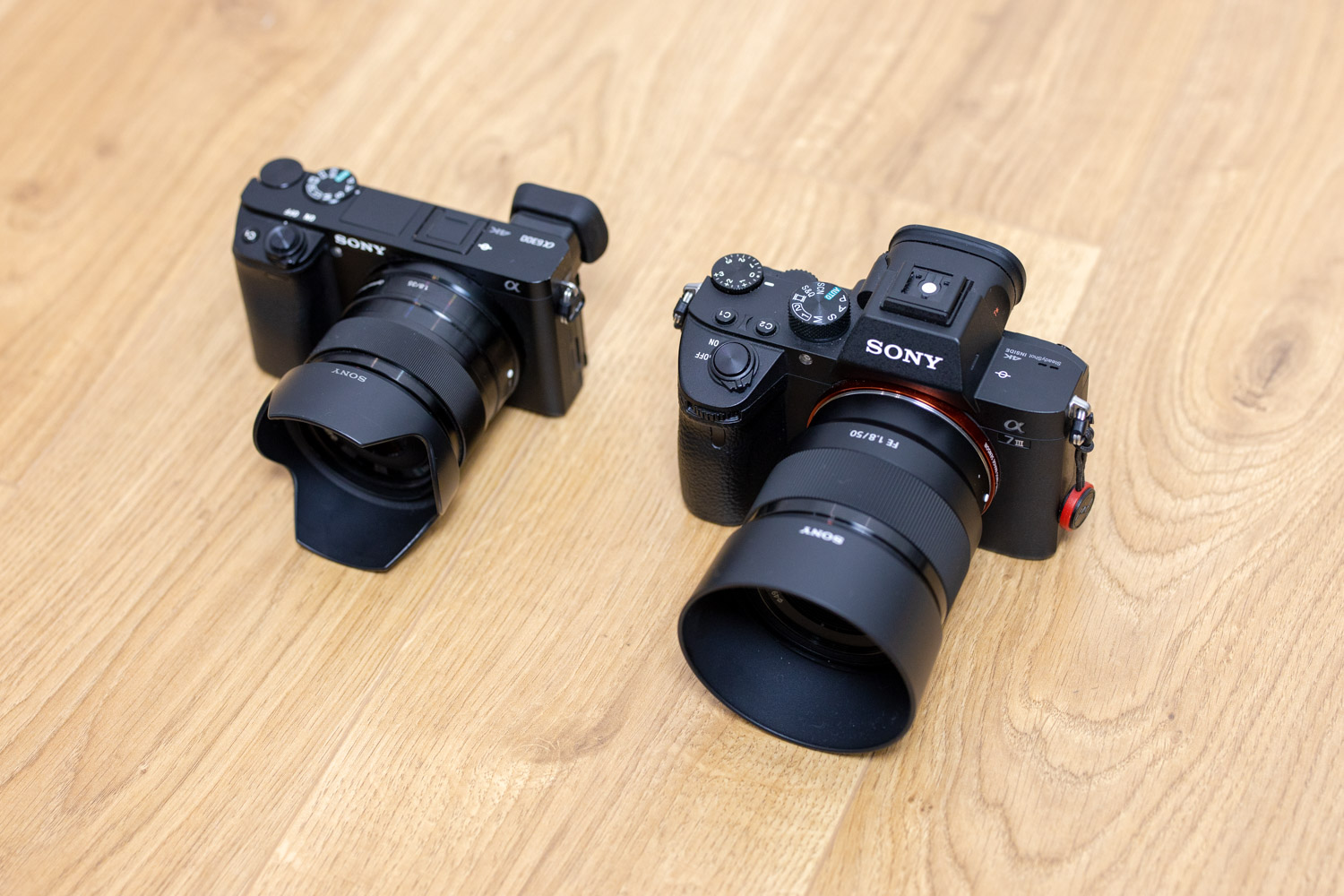
For comparison, I used a full-frame Sony A7 III camera with 50 mm f / 1.8 lens and a camera with APS-C matrix: Sony A6300 with 35 mm f / 1.8 lens. Both lenses provide almost the same angle of view (the impact of the matrix size on the viewing angle can be seen in the following paragraphs).
Let's start with the most obvious thing, or noise.
I prepared a scene that I photographed on the ISO 12800 sensitivity. This is the typical sensitivity used in night scenes. Let's see how the comparison works. On the left there is a full frame camera picture, on the right with APS-C.
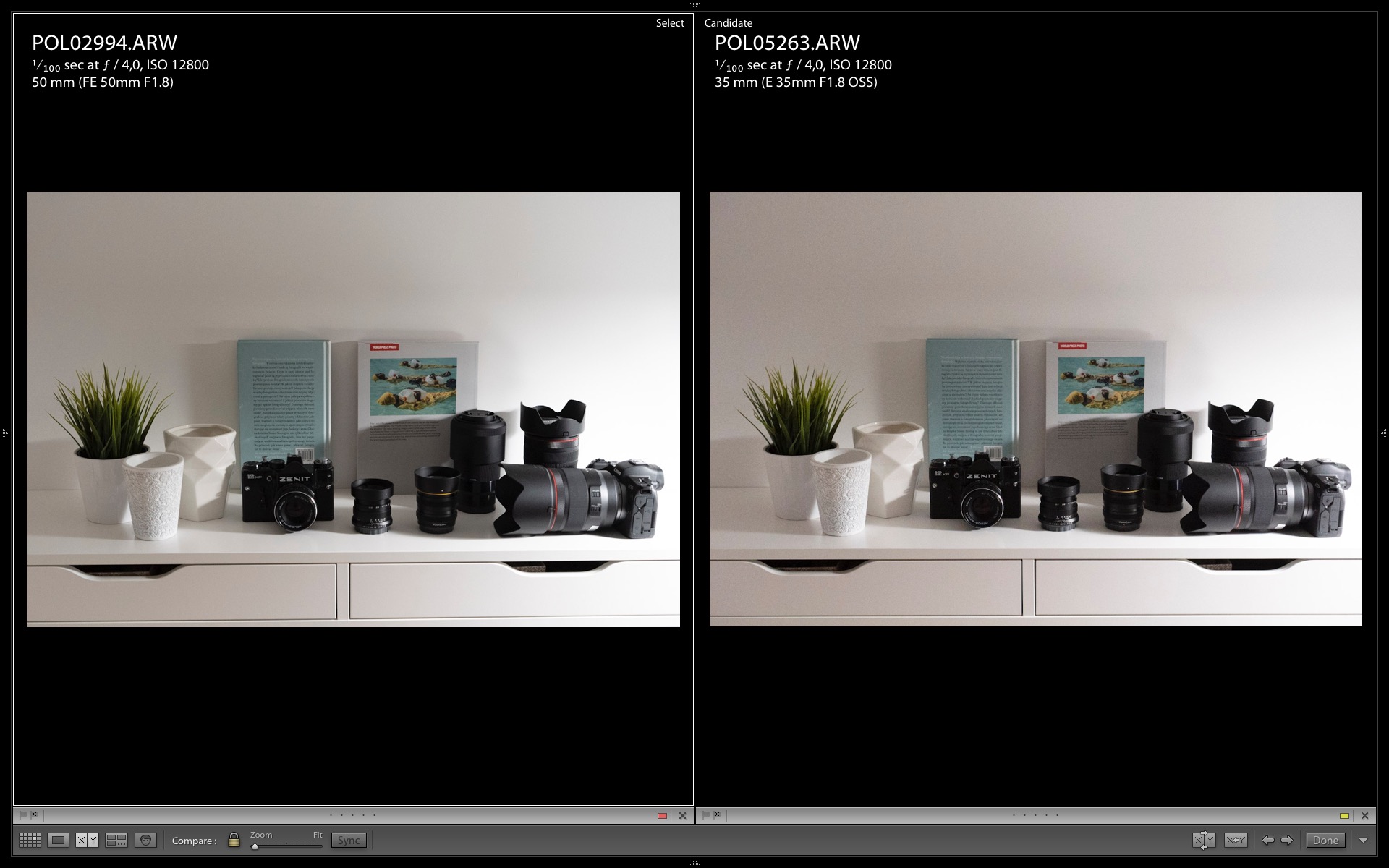

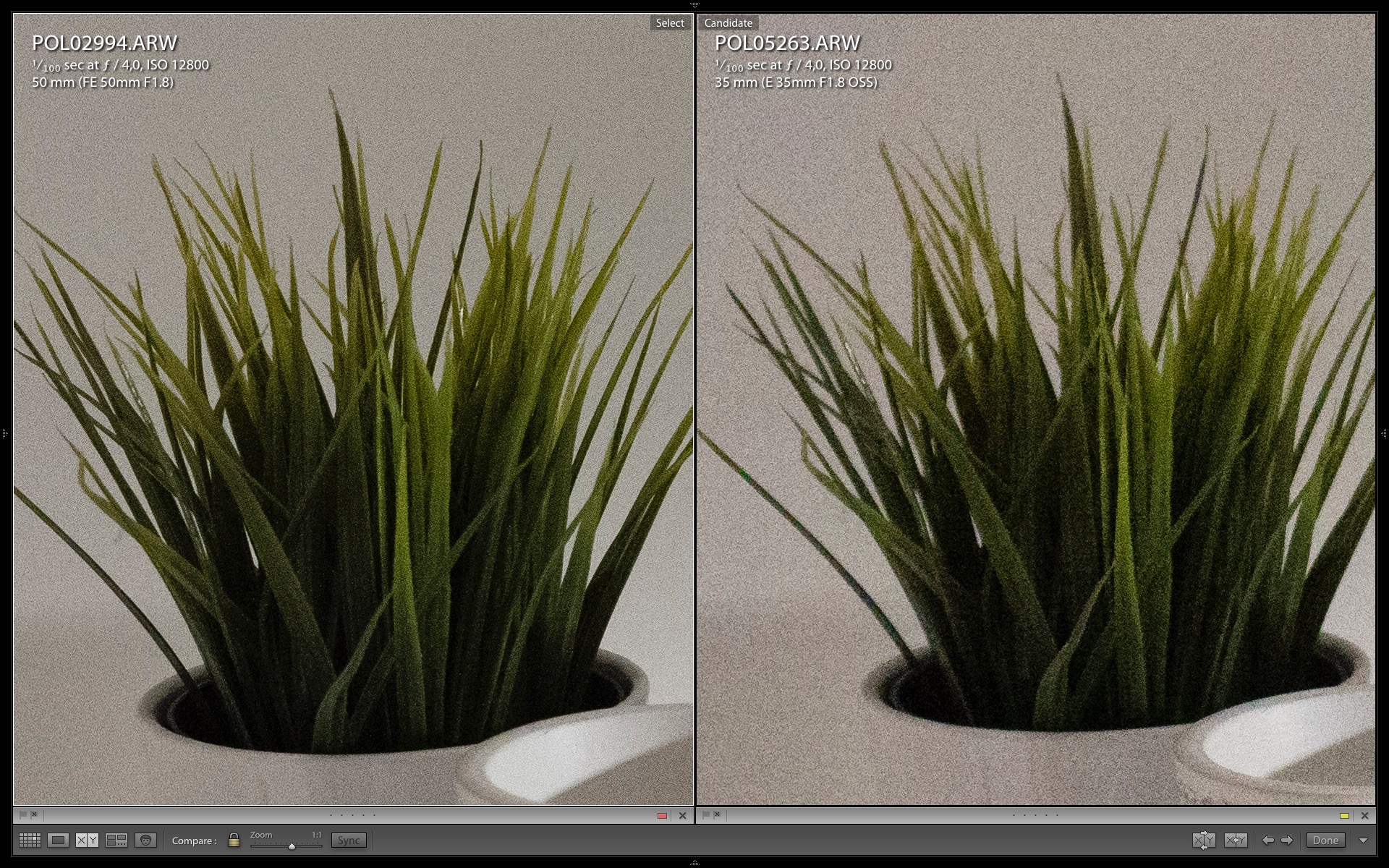
On an online thumbnail, the differences are not big, but it's enough to enlarge the pictures to full screen to see dramatic differences. The frame magnification clearly shows how much better picture quality the full frame gives. Sensitivity of the order of ISO 12800 on a full frame is completely useful, when in APS-C it is usually better not to exceed over ISO 3200.
The second most visible difference is the potential for blurring the background.
Basically, the larger the matrix, the easier it is to get a blurred background. In my comparison I use two lenses with the same angle of view and the same light f / 1.8. See how big differences in background blur can be obtained with their help.
As you can see, in the picture from the full frame (below) the bokeh circles are much larger. The background is fuzzy to a much greater degree.
This translates in a straight line into a mythical visualization of the photo. This concept is not liked by some photographers, sometimes considered pure esoterism, because it is impossible to define art. Nevertheless, full frame camera is easier to make a picture that has something in it . Full frame lenses generally simply draw nicer, plus a larger background blur. I tried to illustrate it in the pictures below.
If the full frame is better than APS-C, maybe it's worth to get even bigger dies?
The fact is that the larger matrix allows you to take pictures of better quality. It is also a fact that there are cameras with matrices larger than a full frame on the market. The so-called. medium format can be found in the offer of Fujifilm and Leica.
However, these are cameras much bigger than full-frame constructions. For this reason, they are great for working in the studio or in a controlled outdoors, but rather they are not used in reportage, street photography, sports or other areas that require mobility and speed. Medium format is a typical tool for portraitists, especially those working commercially for large publishing houses.
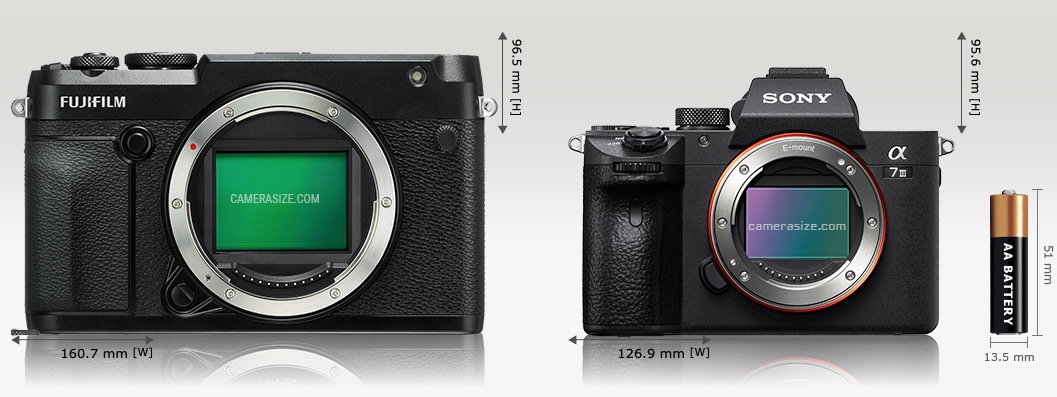
In the picture above you can see the Fujifilm GFX 50R - the smallest medium format camera on the market - and the Sony A7 III, which is one of the smallest full frame cameras. At the moment, the full frame is in my opinion the golden mean, although some recognize that this format is too big for everyday photography. Everyone as needed.
The lenses are an important issue.
As a rule, a larger matrix format requires larger lenses. The lens field must cover the larger sensor, so the optics must have a larger diameter. It also translates into weight and price. Full frame lenses are generally much larger, heavier and more expensive than glasses designed for APS-C dies.
Unfortunately, connecting a low-cost APS-C lens to a full frame is pointless. Just see what effect it generates.
The lens does not cover the entire field of the matrix, so that the image looks like it was photographed by a telescope. It is possible to cut out the center of the photo and use it (some full frame cameras allow you to switch to APS-C mode), but it is associated with a sharp drop in resolution. In addition, it is simply a waste of a large sensor.
And what does the crop mean and how does it affect the angle of view of the lens?
There is one more problem with lenses, namely the "crop factor" or the focal multiplier. The APS-C matrix has a multiplier of x1,5 (x1,6 in Canon). This means that the lenses give it an angle of view, as if they had a focal length of 1.5x.
This is best illustrated by an example. The standard lens for a full frame is 50 mm, but if you connect a 50 mm lens to the APS-C camera, you get a narrower angle of view. To get a full-angle view of the camera, you need to connect a 35mm focal length lens to the APS-C, because it gives the equivalent of exactly 52.5 mm (35 * 1.5 = 52.5).
The same applies to zoom lenses. A typical full frame zoom is a 24-70 mm lens. A similar angle of view on the APS-C will provide a 16-50 mm lens.
Importantly, this applies to all lenses. If you connect a full-frame 50mm lens to the APS-C, it will give the same angle of view as the 50mm lens designed for the APS-C sensor. In the other direction, this operation will fail, because the APS-C lens on the full frame will trigger a huge vignette, which I showed earlier.
Is the full frame always better than APS-C?
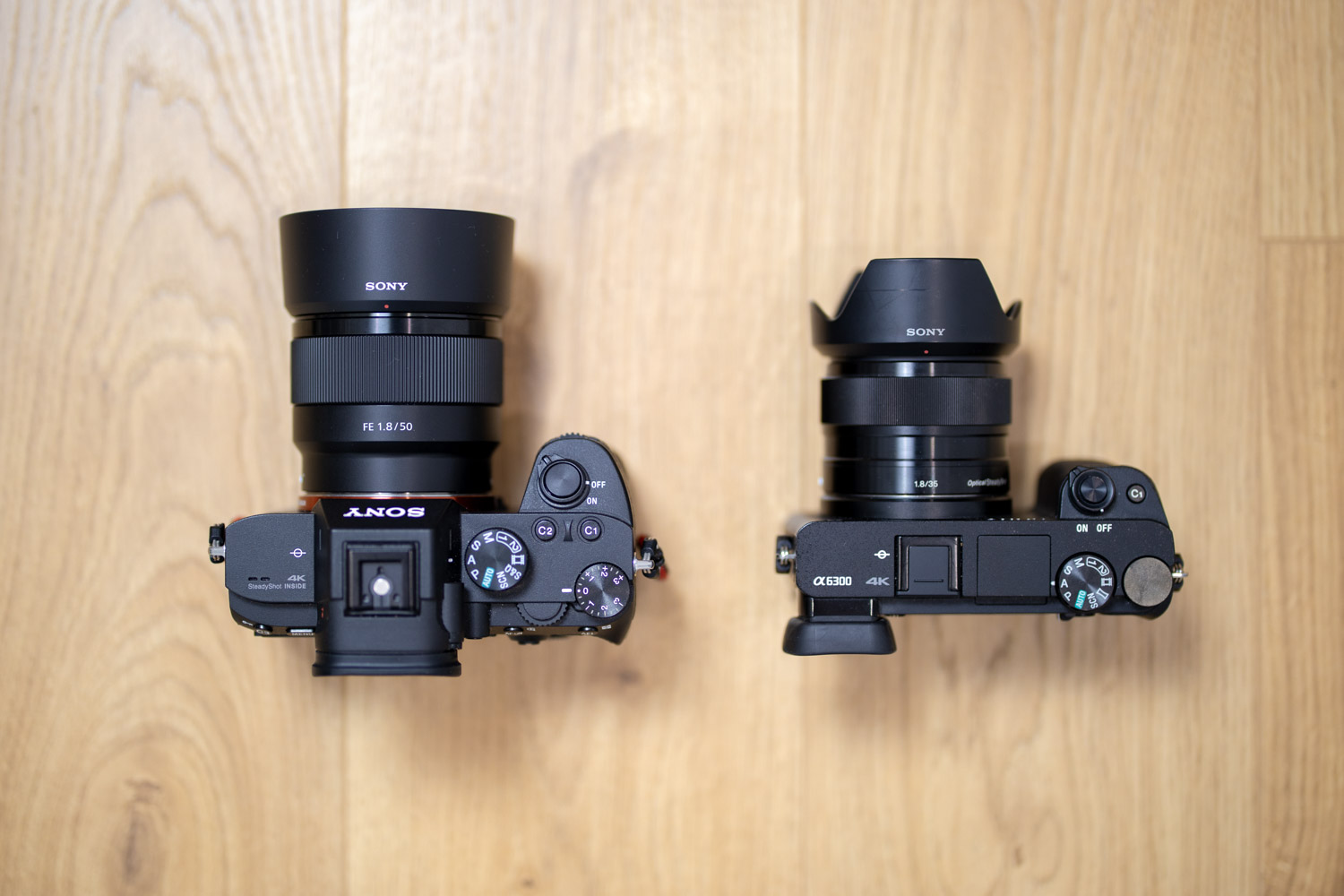
Definitely not. There are areas in which image quality goes to the background, and APS-C cameras perform better. One of them is tourism or travel photography, because the APS-C format takes up less space, it is lighter and more discreet. You can see it all the more, the more lenses we have in the photo bag.
As a rule, APS-C works better in macro photography, where the paper depth of field usually bothers instead of helping. Therefore, the greater depth of field from the APS-C matrix will work better.
The APS-C format also shines in situations when you need to use the longest focal lengths, i.e. in wildlife photography, aerial photography, and sometimes also sports photography. Due to the fact that the APS-C matrix implies the so-called the focal length multiplier, the lenses behave as if they had a longer focal length. If a 300 mm lens is needed on a full frame, APS-C requires a lot of cheaper 200 mm.
In addition, the APS-C format is simply cheaper, so it is a natural choice for aspiring photographers. Fortunately, the prices of full frames are beginning to melt. Of course, the latest designs can be infinitely expensive, but previous generations of cameras are cheaper up to 3500 - 5000 PLN, and this is the amount that can be spent by many photo enthusiasts.
Photo-Wednesday: what is the full frame and how is it compared to APS-C?
It’s great to come across a blog every once in a while that isn’t the same out of date rehashed material. Fantastic read. Best المحترف العربي service provider.
ReplyDeleteYou have shared a lot of information in this article. I would like to express my gratitude to everyone who contributed to this useful article. Keep posting. Wildlife Photography Safari Uganda
ReplyDeleteA powerful share, I just given this onto a colleague who was doing somewhat evaluation on this. And he in actual fact purchased me breakfast because I found it for him.. smile. So let me reword that: Thnx for the deal with! But yeah Thnkx for spending the time to discuss this, I feel strongly about it and love reading extra on this topic. If possible, as you turn into expertise, would you thoughts updating your weblog with extra particulars? It’s highly helpful for me. Big thumb up for this weblog put up! picture printing and framing
ReplyDeleteI'm drawn in by the introduction of this article. It is a really a profitable article for us. Continue to post, Thank you.picture framing miami
ReplyDelete